M. LERMONTOV
The Sail.
Let's read the sentence.
A white lonely sail in the bluish fog of the sea.
Replace the period with an exclamation mark:
A white lonely sail in the bluish fog of the sea!
What has changed in this statement?
In the first case there was only the message that there is a sail in the sea; now we feel the person who says it. His experiences are transmitted to us because this phrase contains the same feeling as the exclamation: "Look! Sail in the sea!”
What is the main word in the exclamatory sentence “Look! Sail in the sea!"? (The noun “sail.") In our exclamatory sentence? (Also the noun “sail.")
Let's read this sentence in such a way as to convey the feeling that the narrator feels. The short phrase “Look! Sail to sea!” suggests how and with what intonation we should read this long sentence:
A white lonely sail in the bluish fog of the sea!
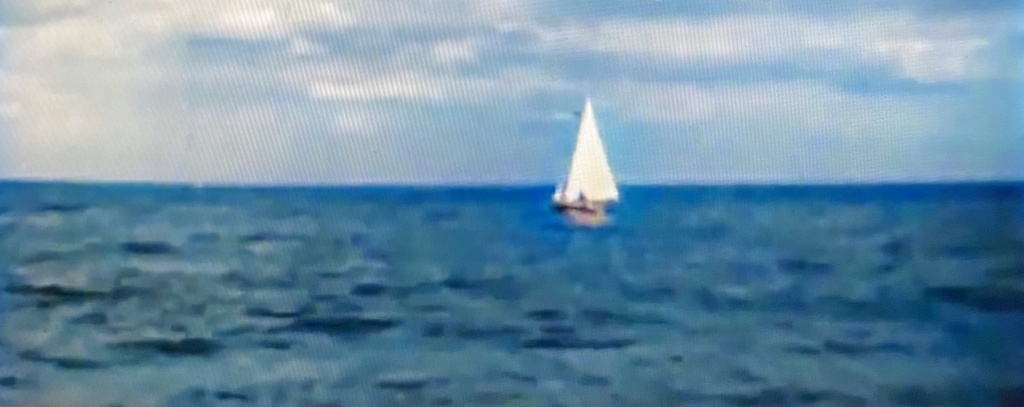
So begins a poem by the 19th century Russian poet Mikhaíl Lérmontov, which has entered the treasury of Russian poetry and is familiar to everyone in Russia.
In one of his letters, being a very young eighteen-year-old poet, he writes: “Here are more poems that I composed on the seashore". Then follows the poem itself. The fragment we read is a translation of his first sentence. At the end of the sentence Lermontov put an exclamation mark with dots:
A white lonely sail
in the bluish fog of the sea!..
The exclamation mark indicates the emotional excitement that gripped him. The dots mean that not everything is said and a long pause is required to fill in what is not said. Many of the thoughts that overwhelmed the young poet remained unspeakable and unexpressed.
Whether Lermontov managed to convey his feelings and his thoughts to the reader, we will decide after reading the poem. But for this we need to understand the text of the poem correctly. We'll start thinking about it from these two lines. Try to mentally see the picture that is portrayed by these words:
A white lonely sail
in the bluish fog of the sea!..
A drop of attention: is the sea bluish or is the fog bluish? (In the fog… bluish.)
So, we`ve read these lines and, together with the author of the poem, we see a white sail in the sea fog. Where do you see this sail: in the distance or nearby? Can we say about the sail, if it is not far away from us, that it is in the fog of the sea?.. At the very beginning of the poem, Lermontov informs us that the sail is very far away from the observer.
When reading these lines thoughtfully, several questions arise that need to be answered in order to see the picture as the poet depicts it.
Is it possible to see a sail in fog if it is far away from us? (No.)
Now we need to pay special attention to everything that is said about the fog in order to understand what this “fog” is in which the sail is visible.
You have all, of course, seen fog. What color are the fogs? (Grey.) What color is the fog in the poem? (Bluish.)
So what is this bluish sea fog?
Have you noticed that all objects that are far from us become bluish? Why is this happening? (The air gives them that color.)
The blue coloring of the distance we can clearly see in clear weather. On a clear sunny day, the sea distance also turns bluish. In such a bluish "fog" of the sea we see a sail. But it is more correct to say: we see it against the background of the bluish distance of the sea.
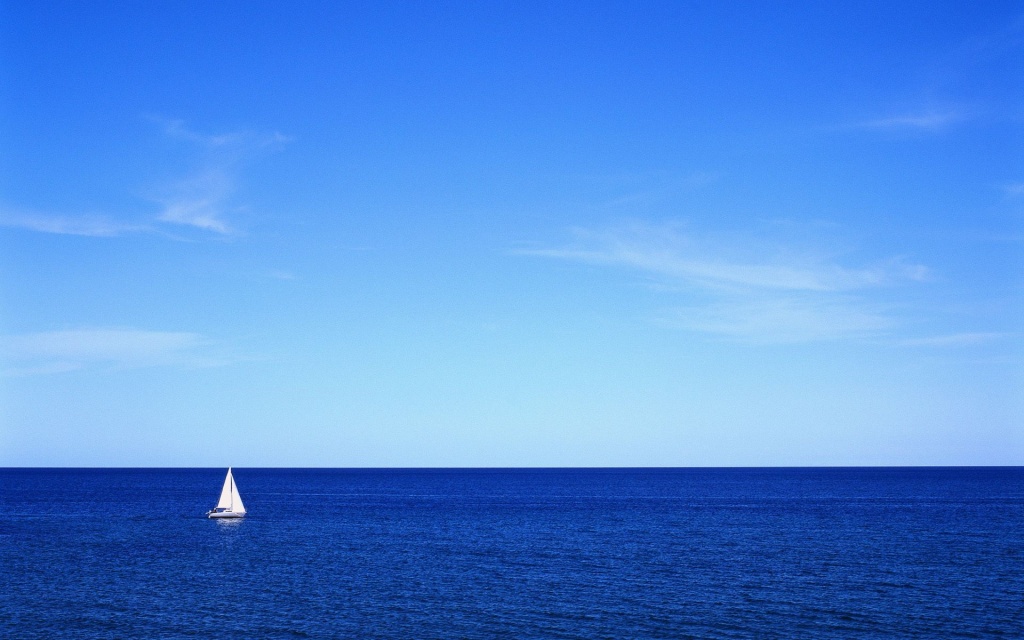
Imagine an endless sea, unpredictable in its state. Its high, threatening waves do not overwhelm us, because we are on the shore and they do not reach us. But far out to sea on its dangerous waves is a lone sail.
If you were able to imagine this picture, what thoughts and feelings did you have? Did you envy the daredevil who controls this sail? Would you like to be in his place, under sail? Or does his daring, his risky, life-threatening contest with the sea seem reckless to you? Do you wish you had the courage to go out to the open sea like that?
Lermontov did not need to imagine a picture of the sea with a sail, as you and I have to do. Let’s remember the words of his letter: “Here are more poems that I composed on the seashore".
A lonely sail in the bluish sea distance he saw in reality. Lermontov is a poet; he perceived every phenomenon of the surrounding world especially acutely. Feelings and thoughts that seized him at the sight of the sail, immediately formed into poems. We will find out what feelings and thoughts have taken hold of him by reading the poem and thinking about what we read.
A lonely white sail
in the bluish fog of the sea!..
What does he seek in the distant sea?
What has he forsaken in his native land?
The waves play, and the wind whistles,
and the mast bends and creaks.
Alas, he does not seek happiness,
nor does he run from happiness!
Below him is a stream brighter than azure,
above him is the golden ray of the sun.
But he, rebellious, asks for a storm,
as if there were peace in storms!
This poem seemed to come from young Lermontov by itself.
Did you like it? Do you have the feeling that there is something mysterious and secret in this poem that you want to think about? Let's go through the secret places of the poem.
Here Lermontov sees a sail in the sea. This sail is not just a white canvas for him. He asks for a storm, he is looking for something, he has a native land. For the poet, this sail is something spiritual, a creature endowed with feelings, striving for some unknown goals. Lermontov talks about the sail in a way that you can only talk about a person.
But maybe it's really about a person? After all, someone is sailing.
Let's address the questions that arise in the poet's mind when he sees a sail.
What does he seek in the distant sea?
What has he forsaken in his native land?
Who is it? A sail or a man? Does the poet send his questions and thoughts to the sailboat or to the person? Do you think Lermontov would be able to answer our questions?
Try in your imagination to replace the sail with a person. This is not difficult to do: you probably noticed that in the poem the word “sail” is constantly replaced by the pronoun “he”? Find these places in the poem. (What does he seek; what has he forsaken; he does not seek happiness; nor does he run from happiness; he asks for a storm; below him; above him.)
While reading a poem, mentally replace the sail with a person, and you will feel that the poem loses its appeal.
What is the poem about: a sail or a swimmer who dared to sail the sea? What should we see and who should we not forget when reading a poem?
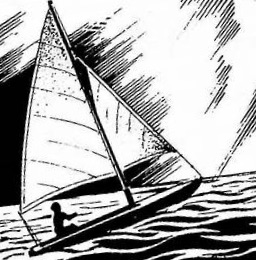
What does he seek in the distant sea?
Lermontov asks himself this question as he watches the sail. Do we find the answer to this question in the poem? Let's think, why is the sail at sea. (It wants the storm, longs for the storm, asks for it.) So what is he looking for in the distant sea? (The storm.) Read the line that contains the answer.
But he, rebellious, asks for a storm,
Why do you think this man wants a storm? It wants to test itself in extraordinary circumstances, to show its abilities in a dangerous deadly situation. It is a thirst for heroism and an aversion to peace and inaction. This is the life position of a man with a troubled, restless, rebellious soul, someone who craves the storm. Let’s read the next line.
as if there were peace in storms!
This is the voice of another person who has a different position in life. He can't understand why anyone would ask for a storm. If there was peace in storms, then he would understand.
Which of these positions do you prefer? Which one would you like to follow in your life? What do you think Lermontov's position is?
07.02.2024The thoughts and feelings that swept over Lermontov at the sight of the sail were empathy with the state of mind of the rebellious swimmer. The poet attributed this state of mind to the swimmer. In reality, the poem expresses the spiritual world of Lermontov himself.
This world was extremely rich and complex. This is what Lermontov wrote about himself in a poem a year before creating “The Sails”.
Life is very boring when there is no struggle.
I must act, I want to make each of my days immortal.
I can't understand what it means to rest.
Something is always boiling and ripening in my head.
Desire and longing give no rest to my breast.
However, my life flies fast, and I constantly fear that I will not have time to accomplish something important!
How does the young poet appear to us?
He's the kind of guy who's not satisfied with life, it's not from happiness that his sail runs.
He has a rebellious soul, his rebellious soul can't rest, life is very boring when there is no struggle.
He strives through ceaseless labor for greater deeds: I must act, I can't understand what it means to rest, I want to make my every day immortal.
He is constantly doubting his capabilities: my life is going very fast, I'm afraid I won't have time to do anything important.
But let's go back to the seashore.
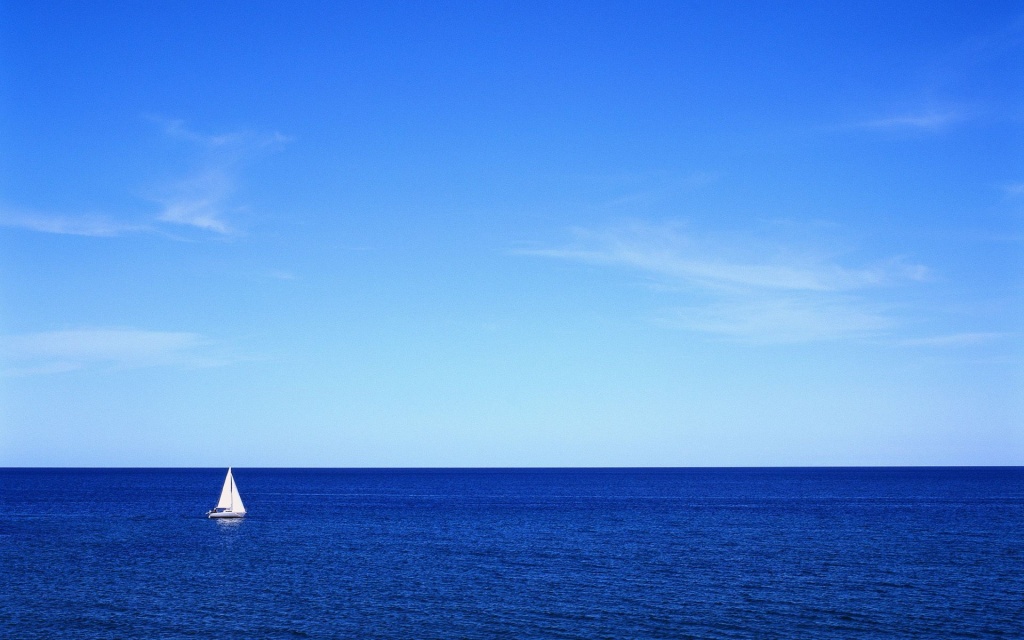
A fearless sail stirs the imagination of the a young poet, evokes strong feelings and a flow stream of thoughts. The picture you see and the thoughts that arise are immediately put on in poems. A small poem of three stanzas is formed. In each stanza there is a picture of the sea with a sail, and thoughts inspired by it.
What is the main thing in the content of the poem: pictures of the seascape or the poet's thoughts?.. Of course, the poet's reflections - they directly express Lermontov's state of mind.
But for the attentive reader, pictures of nature also have their own mystery. Let's reread [re-read] the description of the landscape in the poem, these are the first two lines of each stanza.
A white lonely sail
in the bluish fog of the sea!..
The waves play, and the wind whistles,
and the mast bends and creaks.
Below him is a stream brighter than azure,
above him is the golden ray of the sun.
How does the first stanza depict the sea: stormy or calm? (Calm down.) And in the second stanza? (Turbulent.) And in the third stanza? (Calm down again.)
So, while Lermontov was watching the sail, the sea changed its state three times! Is this really possible?..
Why does Lermontov depict in the second stanza the sea as stormy, with a hurricane wind? Let's reread the entire stanza.
The waves play, and the wind whistles,
and the mast bends and creaks.
Alas, he does not seek happiness,
nor does he run from happiness!
Is there any doubt that a sail is not looking for happiness?
The raging sea element is depicted in such colors that the reader cannot even think that the sail (swimmer!) is looking for any benefits for himself.
Let's read the third stanza.
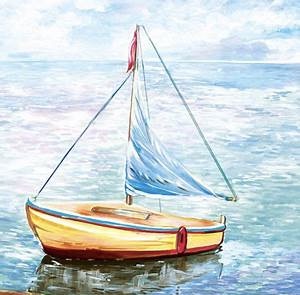
Below him is a stream brighter than azure,
above him is the golden ray of the sun.
But he, rebellious, asks for a storm,
as if there were peace in storms!
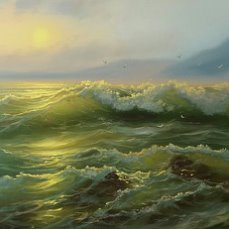
The water is lighter than azure when the sea is quite calm and the sky above the sea is azure and the sun is bright. Who could not like such a sea? Only a man with a rebellious soul who hates peace and is eager for vigorous activity.
The first stanza describes a calm sea through “sea fog”. Remember what's called fog? The bluish coloring of the sea distance. A sail can be seen against the background of this bluish sea distance, as the poet indicates its location. Where is the sail: near or far from the coast? The sail made a strong impression on the young man, because he was sailing alone far out to sea, where there are no material benefits, but only danger to life.
Let's think about the seascapes of the sea in the poem.
Here Lermontov, being on the seashore, writes a poem about the sea. Does he depict the sea as he sees it?.. No, in the poem the sea [the sea in the poem] is fictional, it is constantly changing its state.
Why did Lermontov had to fantasize when describing the sea? The poem "Sail" is not a sketch from life of a sail floating on the sea. It was important for Lermontov to convey his thoughts and feelings.
In each stanza the landscape is depicted in such a way as to help to express the thought more clearly and convincingly and to convey the feeling more fully. As we read the poem, we feel that admiration for the power of the human spirit that comes through in the poet's thoughts and experiences.
Reread the poem.
The Sail.
A lonely white sail
in the bluish fog of the sea!..
What does he seek in the distant sea?
What has he forsaken in his native land?
The waves play, and the wind whistles,
and the mast bends and creaks.
Alas, he does not seek happiness,
nor does he run from happiness!
Below him is a stream brighter than azure,
above him is the golden ray of the sun.
But he, rebellious, asks for a storm,
as if there were peace in storms!
1832